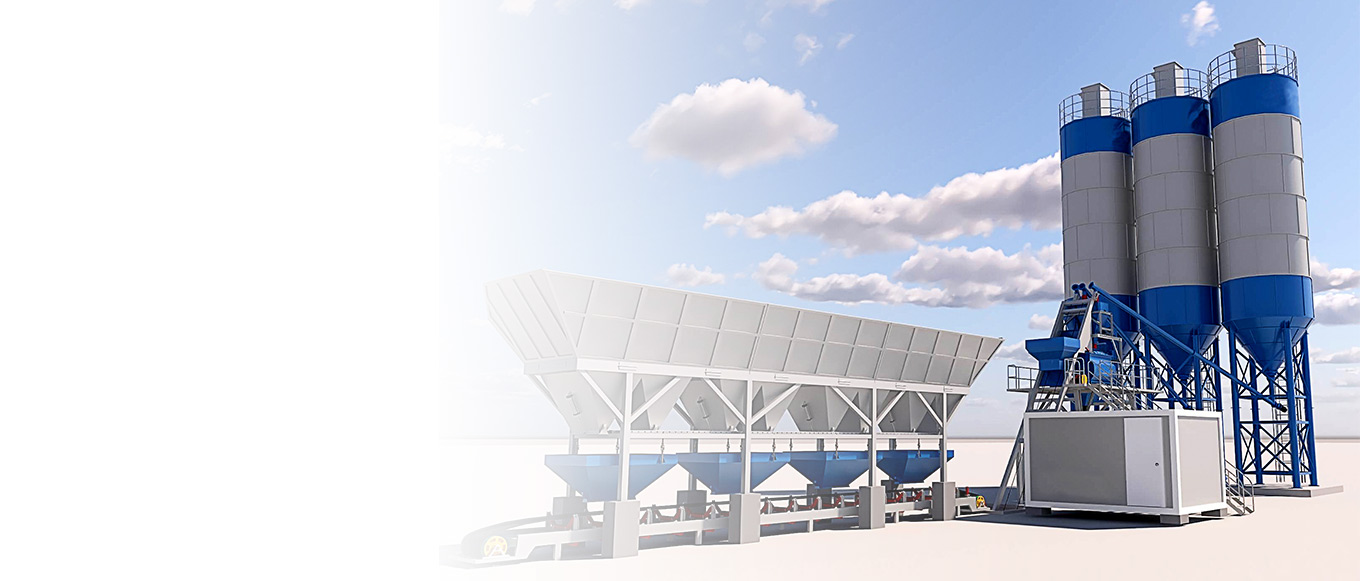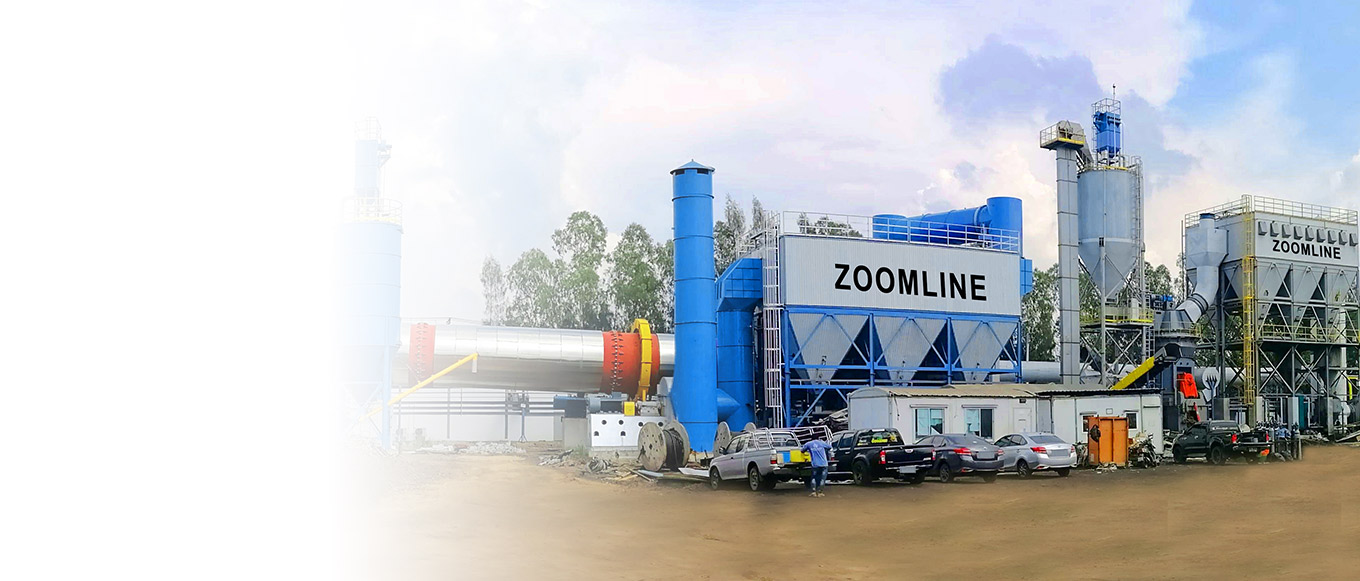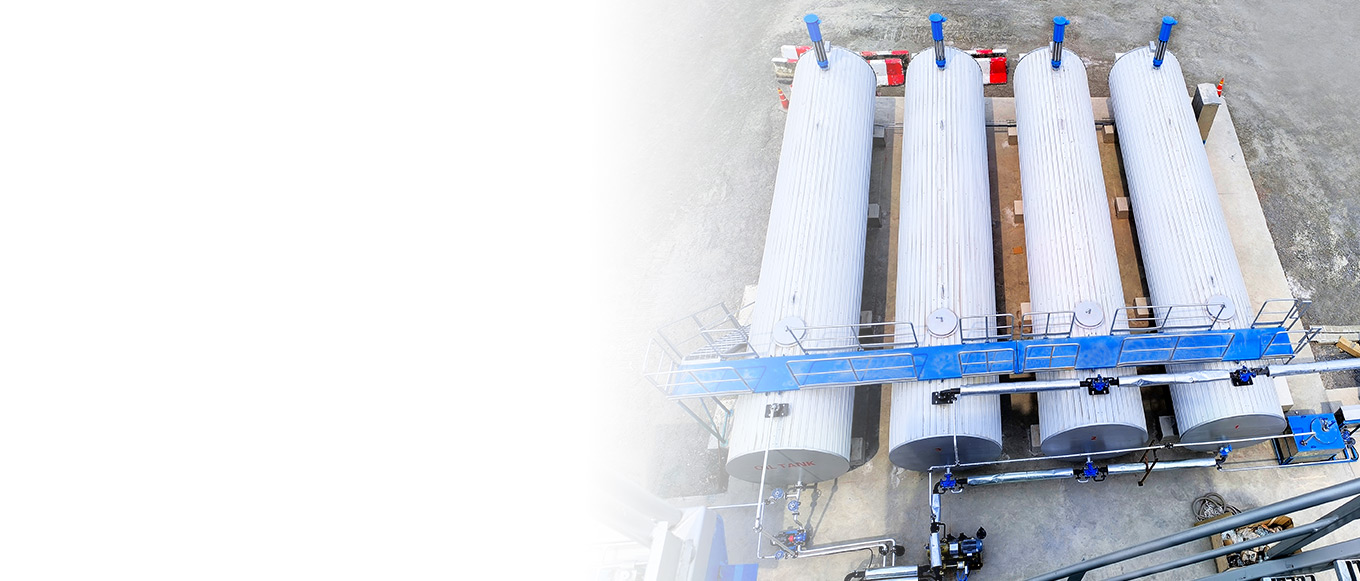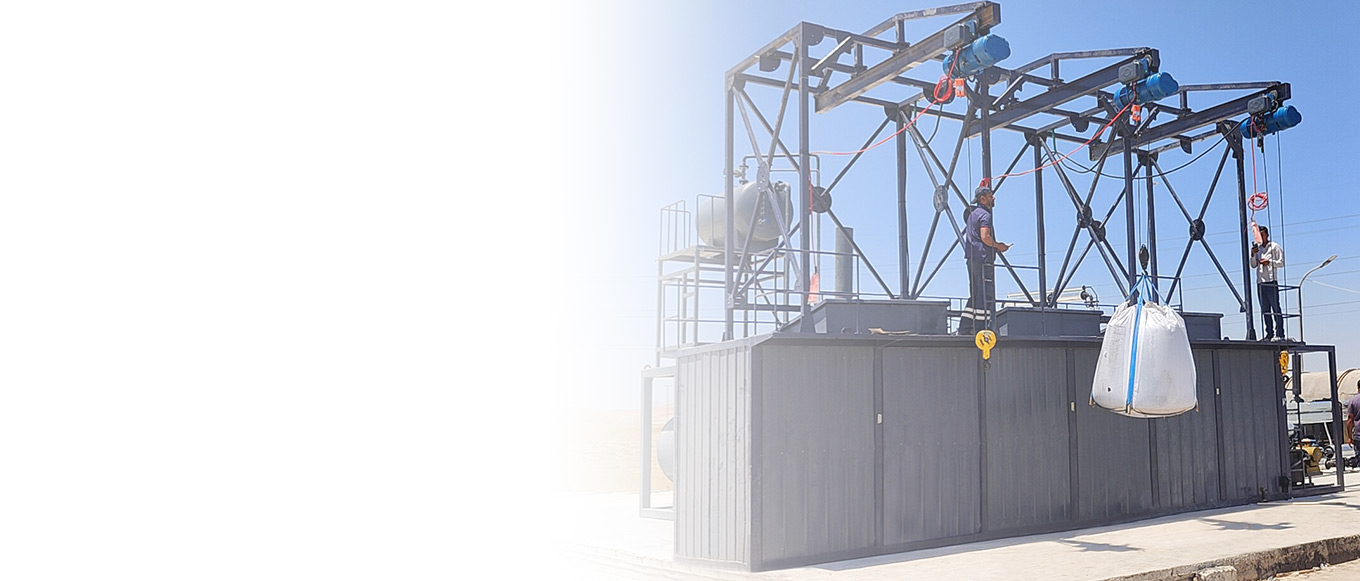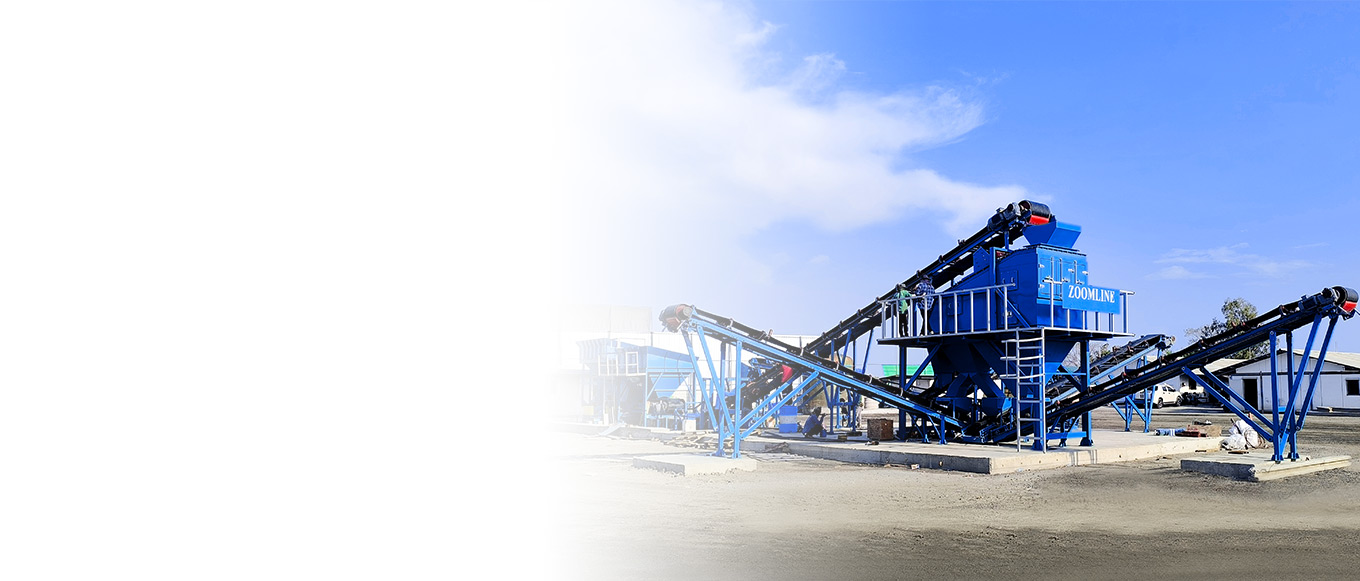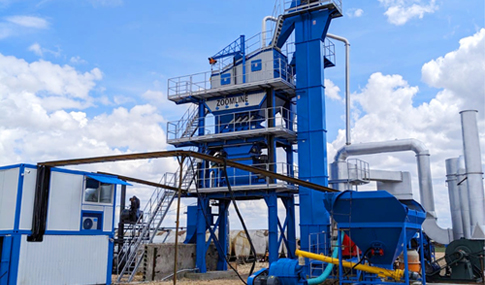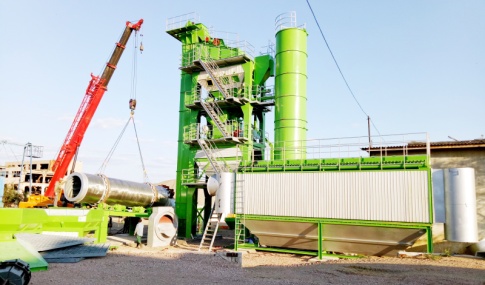A brand-new asphalt mixing plant stands tall, marking a crucial stage in the project. However, skipping a vital step before pressing the start button—standardized trial operation—could lead to equipment damage, production delays, soaring costs, or even safety accidents. Trial operation is far more than simply “powering on”; it’s a comprehensive check-up of installation quality, equipment performance, and system synergy. This article provides a complete trial operation guide from preparation to completion, ensuring your asphalt mixing plant takes its first step towards efficient production smoothly and safely.

Core Preparations Before Trial Operation
Before powering on, meticulous preparation is half the battle. The goal at this stage is to eliminate all visible and hidden problems.
Equipment Installation and Final Confirmation of Mechanical Structure
Tightness Check: Thoroughly recheck the anchor bolts and connecting bolts of key components such as the main frame, drying drum support, and mixing cylinder base to ensure they all meet the specified tightening torque.
Rotating Component Inspection: Manually rotate the plant to check for jamming or interference in large rotating components such as the drying drum and mixing cylinder.
Conveying System Inspection: Inspect all belt conveyors to ensure the belts are not misaligned, idlers and rollers rotate freely, and tension is appropriate.
Electrical and Control System In-Depth Inspection
Power Supply Inspection: Confirm the main power supply and control power supply voltages are stable, meet equipment requirements, and have correct phase sequence.
Sensors and Instruments: Check that all sensors, including temperature, pressure, material level, misalignment, and pull rope switches, are correctly installed and that wiring is secure.
Control System Power-On: With the main motor power disconnected, power on the PLC, touch screen, and other control systems for the first time to check for normal startup and communication.
Pneumatic and Hydraulic System Troubleshooting
Pneumatic System: Start the air compressor and observe whether the system pressure is stable. Check all air pipe joints, cylinders, and solenoid valves for leaks.
Hydraulic System: Check that the hydraulic station oil level is within the indicated range, that the pressure builds up normally after startup, and that actuators (such as finished material unloading gates) operate smoothly without jamming.
Lubrication and Cooling Systems Confirmation
Strictly follow the lubrication charts provided by the equipment manufacturer, adding the specified type and amount of lubricating oil/grease to all bearings, gears, chains, and other friction pairs. Simultaneously, start the circulating water pump and cooling fan, ensuring unobstructed piping and effective cooling.
Phased Trial Operation Procedures
Trial operation must follow the basic principles of “single machine first, then linkage; no-load first, then load,” proceeding gradually.
No-load Trial Operation
The core of this stage is “listening to the sound, observing the operation, and checking the logic,” verifying the mechanical equipment and control program without load.
Cold Aggregate Feeding System Test
Start with the cold aggregate feeder at the front end, performing jog tests one by one, then continuous operation. Carefully observe the motor current, whether the operation is stable, listen for abnormal noises from the reducer, and check for belt misalignment.
Drying Drum System Test
Start the drying drum drive motor and observe whether its starting current and operating current are within the rated range. Check whether the contact surface between the support roller and the rolling ring is uniform, whether the guide roller works normally, and whether there is abnormal noise at the meshing of the large gear ring.
Burner System Test (No Ignition)
Simulate the start-up of the burner on the control room operating screen, testing the start-up and stop sequence of the blower, induced draft fan, fuel pump (or gas valve group), and the accuracy of the damper actuator’s action, but without actual ignition.
Hot Aggregate Lifting and Screening System Test
Start the hot aggregate elevator and check if the bucket belt is misaligned and if the head discharge is smooth. Start the vibrating screen and observe if the screen box’s running trajectory is stable, the amplitude is normal, and there are no twisting or abnormal impact sounds.
Weighing and Mixing System Test
Perform zero-point calibration of the aggregate scale, powder scale, and asphalt scale in the control system. Start the mixing cylinder and check if the running trajectory of the mixing arms and blades is correct, and if the cylinder (or hydraulic cylinder) of the discharge gate operates sensitively and in the correct position.
Dust Removal System Test
Start the main induced draft fan and observe the correspondence between the damper opening and the air pressure. Test the pulse backflushing system and listen to its working sound to determine if the solenoid valve is operating normally.
System Linkage No-Load Test Run
After all individual equipment has run normally under no-load conditions, conduct a full system linkage no-load test run. Select a preset formula in the control system and start the entire production process. The core purpose is to verify the logic of the central control program, including:
Whether the equipment start-up and shutdown sequence is correct (e.g., dust collector starts first, then shuts down last).
Whether the interlocking protection is effective (e.g., if the inclined belt doesn’t start, the drying drum cannot start).
Whether the signal transmission between each piece of equipment is correct.
Load Trial Run
This is the most critical stage, simulating real production to verify the equipment’s performance under load.
Cold Aggregate Feeding and Drying Drum Heating
Starting from 30% of the rated load, gradually increase to 50%, 80%, and finally reach 100%. Each load stage should be stabilized before upgrading to avoid sudden full load causing equipment overload. Then ignite the burner, using a slow heating strategy. For the initial heating, it is recommended to control the temperature rise from ambient temperature to operating temperature within 4-8 hours to avoid refractory material cracking and thermal stress concentration in the drum.
Hot Aggregate Screening and Weighing Test
The heated aggregate enters the vibrating screen via an elevator. Observe the screening efficiency and check for overflow or blockage. Under hot conditions, standard weights are used to dynamically calibrate each weighing system to ensure that the metering accuracy of aggregates, powders, and asphalt meets the specifications.
Mixing Test and First Batch Production: Produce the first batch of complete asphalt mixture. Closely observe the movement of the material within the mixing tank to ensure there is no “shaft jamming.” After discharge, check the uniformity of the mixture and the asphalt coating effect; it should be uniform in color, without any white spots or clumps.
Finished Material Unloading and Storage: Unload the finished material into transport vehicles or finished material silos. Check the smoothness of the unloading process and measure the temperature loss during unloading to evaluate the performance of the insulation system.
Key Monitoring Points and Performance Evaluation During Trial Operation Throughout the trial operation, dedicated personnel must monitor and record critical data.
Key Operating Parameter Monitoring List
Electrical Parameters: Record the starting and operating currents of each main motor and check for overload.
Temperature Parameters: Regularly check the temperature of each bearing and reducer housing using an infrared thermometer; it should generally not exceed 70℃.
Vibration and Noise: Listen for and sense any abnormal vibrations or harsh noises using experience or a simple vibration meter.
System Pressure: Monitor the pressure of the pneumatic and hydraulic systems to ensure they remain stable within the set values.
Preliminary Product Quality Assessment
Although formal mix design verification requires a laboratory setting, on-site observation allows for a preliminary assessment of product quality. A qualified mixture should exhibit the following characteristics: uniform aggregate gradation, appropriate asphalt content, no severe segregation, and discharge temperature meeting specifications.
Environmental and Safety Indicator Confirmation
Environmental Protection: Observe the dust collector chimney outlet. Under normal combustion and operating conditions, there should be no obvious black or blue smoke emanating from it.
Safety: Reconfirm that the protective covers for all rotating parts are properly installed, and that all emergency stop buttons activate immediately when pressed from any position.
Common Fault Troubleshooting and Emergency Response Plan
Encountering problems during trial operation is normal; the key is to quickly identify and resolve them.
Common Mechanical Problems
Belt Misalignment: Adjust the tension bolts of the driven roller, following the principle of “higher rather than lower” and “forward rather than backward.”
Abnormal Vibration: Check if the foundation bolts are loose, if the motor and reducer coupling is accurately aligned, and if the bearings are damaged.
Common Electrical and Control Problems
Motor Overload Alarm: Check if there is any jamming in the mechanical parts causing excessive load, or if the thermal relay setting is unreasonable.
Abnormal Sensor Signal: Check if the wiring is loose, measure the sensor power supply, and determine whether the problem is with the sensor itself or the wiring.
Common Operational Problems
Burner Ignition Failure: Check if the fuel/gas supply is unobstructed, if the ignition electrode position and gap are correct, and if the damper is in the ignition position.
Inaccurate Weighing: Recalibrate the zero point and range, and check if the sensor is subject to external interference (e.g., excessively tight flexible connections). 4. Emergency Response Plan All personnel involved must be familiar with the emergency shutdown procedure. In the event of personal injury, severe abnormal equipment noise, smoke, or fire, the nearest emergency stop button should be pressed immediately, and the corresponding fire or first aid plan should be activated.
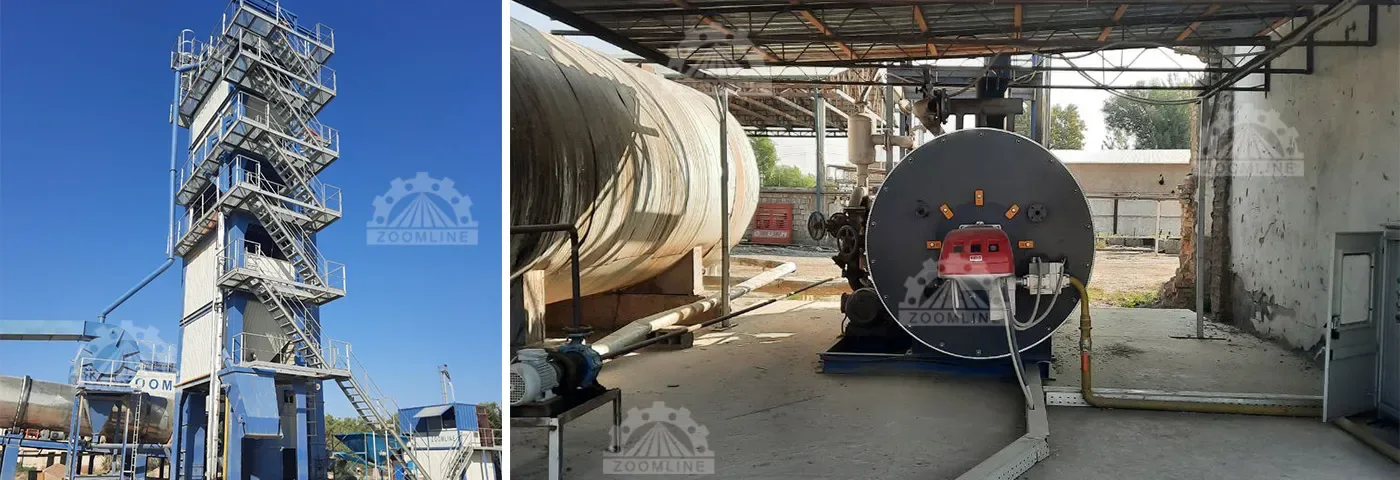
Post-Trial Run Completion Work
Equipment Cleaning and Maintenance
Thoroughly clean the mixing host, hopper, conveyor belt, and discharge port of any residual material to prevent material clumping and affecting future use.
Replace the lubricating oil at all lubrication points (the lubricating oil may have become contaminated with impurities after the trial run), clean the oil filter element, check the hydraulic oil and fuel tank levels, and replenish as needed.
Wipe away dust and oil stains from the equipment surface, perform rust prevention treatment on metal parts (e.g., spray rust-preventive oil), and shut off all power and valves.
Data Recording and Report Writing
Systematically organize all operating parameters, adjustment records, problems encountered, and solutions during the entire trial run into a detailed “Trial Run Report.” This report is valuable information for future equipment maintenance and fault diagnosis.
Final Adjustment and Tightening
After experiencing load and thermal expansion, some connections may loosen. A thorough “hot tightening” of critical parts (especially the bolts on the drying drum and mixing cylinder) must be performed after the equipment has cooled down. 4. Final Training and Handover for Operators
Based on real-world cases encountered during the trial operation, final on-site training will be conducted for operators and maintenance personnel to ensure they can operate the equipment independently, skillfully, and safely.
Conclusion
A rigorous and standardized trial operation is a responsible commitment to the substantial investment in equipment and a promise of future production benefits. It not only exposes potential problems in their early stages but also provides valuable training for the entire team. By following this guide and investing the necessary patience and meticulousness, your asphalt mixing plant will undoubtedly be in optimal condition, laying a solid and reliable foundation for your project.


